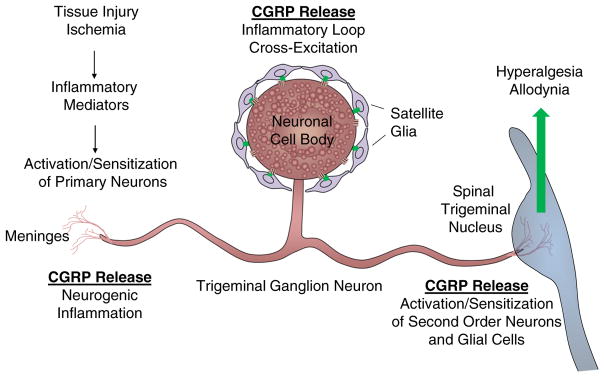Fig. 1.
A schematic illustration of potential sites of CGRP secretion from trigeminal ganglion neurons associated with migraine pathology. In response to tissue injury or ischemia, inflammatory mediators would cause activation of primary nociceptive neurons and subsequent CGRP release in the meninges to promote neurogenic inflammation, from the cell body in the ganglion to facilitate development of an inflammatory loop and cross excitation, and in the spinal trigeminal nucleus to cause activation of second-order neuronal and glial cells resulting in hyperalgesia and allodynia. While CGRP release in the meninges and the ganglion would initiate and sustain peripheral sensitization of primary trigeminal neurons, elevated CGRP levels in the upper spinal cord would promote development of central sensitization

